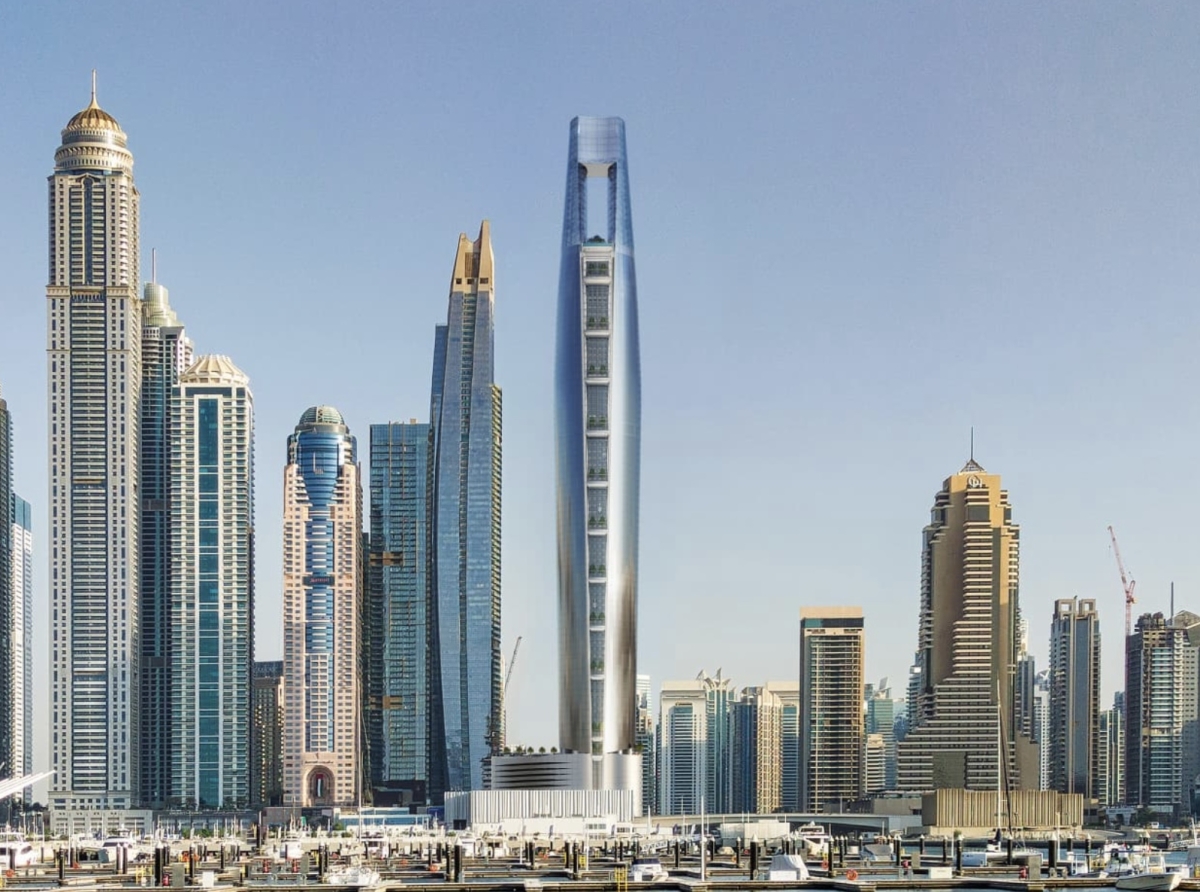DMCC Presents Record-Breaking Silver Bar Ahead of Planned Tokenisation
DMCC has introduced what Guinness World Records has certified as the wor...
Nov 28, 2025

In a city that has repeatedly redefined the modern skyline, Dubai is preparing to unveil another architectural milestone. Ciel Tower, nearing completion in the densely built Dubai Marina district, is set to become the tallest hotel in the world. At approximately 365 meters (1,197 feet) and 82 floors, the tower will surpass the nearby Gevora Hotel to claim a new record—not for mixed-use or office space, but as a structure devoted entirely to hospitality.
The project, led by Dubai-based developer The First Group and managed under IHG Hotels & Resorts’ Vignette Collection, represents an assertive addition to a city that has used height as both symbol and strategy. The building’s stature alone places it on the global stage, but its development reflects deeper economic and urban planning ambitions.
Designed by the international architecture firm NORR Group, under the direction of principal architect Yahya Jan, Ciel was not initially intended to break records. It evolved into its current form through a combination of environmental analysis, engineering constraints, and the city’s ongoing pursuit of architectural distinctiveness. Wind tunnel studies and structural simulations led to a tapered silhouette capped by a narrow, open-air void—an aerodynamic feature that also serves as a visual signature on the skyline.
Internally, the building will contain over 1,000 guest rooms, including approximately 150 suites, all oriented to maximize views over the Arabian Gulf, Palm Jumeirah, and the surrounding marina. A vertical atrium, reaching close to 300 meters, anchors the interior space and is flanked by communal terraces, open sky gardens, and areas of passive ventilation. These design choices reflect an increasing emphasis on sustainable construction practices in high-rise developments, even in environments as extreme as the Gulf.
On the 76th floor, a rooftop pool is expected to become the highest of its kind globally. Higher still, the 81st floor will house a sky lounge and observation deck with uninterrupted, 360-degree views. Dining, meeting, and wellness spaces are integrated throughout the tower’s upper levels, along with a range of guest amenities distributed vertically to reduce congestion and improve flow.
Ciel Tower has been under construction since 2016. It now enters its final stages, with an opening anticipated in late 2025. The project’s timing is strategic: Dubai is pushing to expand its visitor base, particularly in high-spending tourism segments, as it transitions from an oil-centered economy to one increasingly reliant on real estate, trade, and international hospitality.
While the tower is certain to attract attention for its record-setting height, its broader significance lies in what it signals about Dubai’s urban trajectory. As the city’s skyline matures, new developments are forced to compete not just in scale, but in function and innovation. Ciel Tower does both. Unlike mixed-use supertalls, which blend office, residential, and hotel space, Ciel is singular in its purpose—each floor dedicated solely to accommodating guests.
The economic rationale is equally clear. Dubai Marina is among the city’s most densely populated neighborhoods, and Ciel’s location within it ensures a steady flow of business and tourist traffic. In addition to boosting visitor capacity, the hotel is expected to support thousands of direct and indirect jobs, and strengthen Dubai’s positioning as a dominant player in international hospitality infrastructure.
In a region where the limits of engineering are routinely tested and where buildings serve as emblems of national and civic identity, Ciel Tower is more than a record-breaker. It is a marker of the city’s continued bet on verticality as a form of global influence—and a reminder that in Dubai, height remains both ambition and argument.
Photo credits: Dubai Instagram.
Disclosure: Dubai Voice enhances the editing process with the help of carefully selected AI tools. These tools provide valuable support without taking over the editing process completely, ensuring that the final product is the result of human creativity and expertise augmented by the benefits of enhanced technology. This article is protected under the copyright of Dubai Voice. Unauthorized reprinting, republishing, or rewriting of this content is strictly prohibited without explicit permission from Dubai Voice. Quotations from this material are permissible provided that a direct link to the full article on Dubai Voice is included.